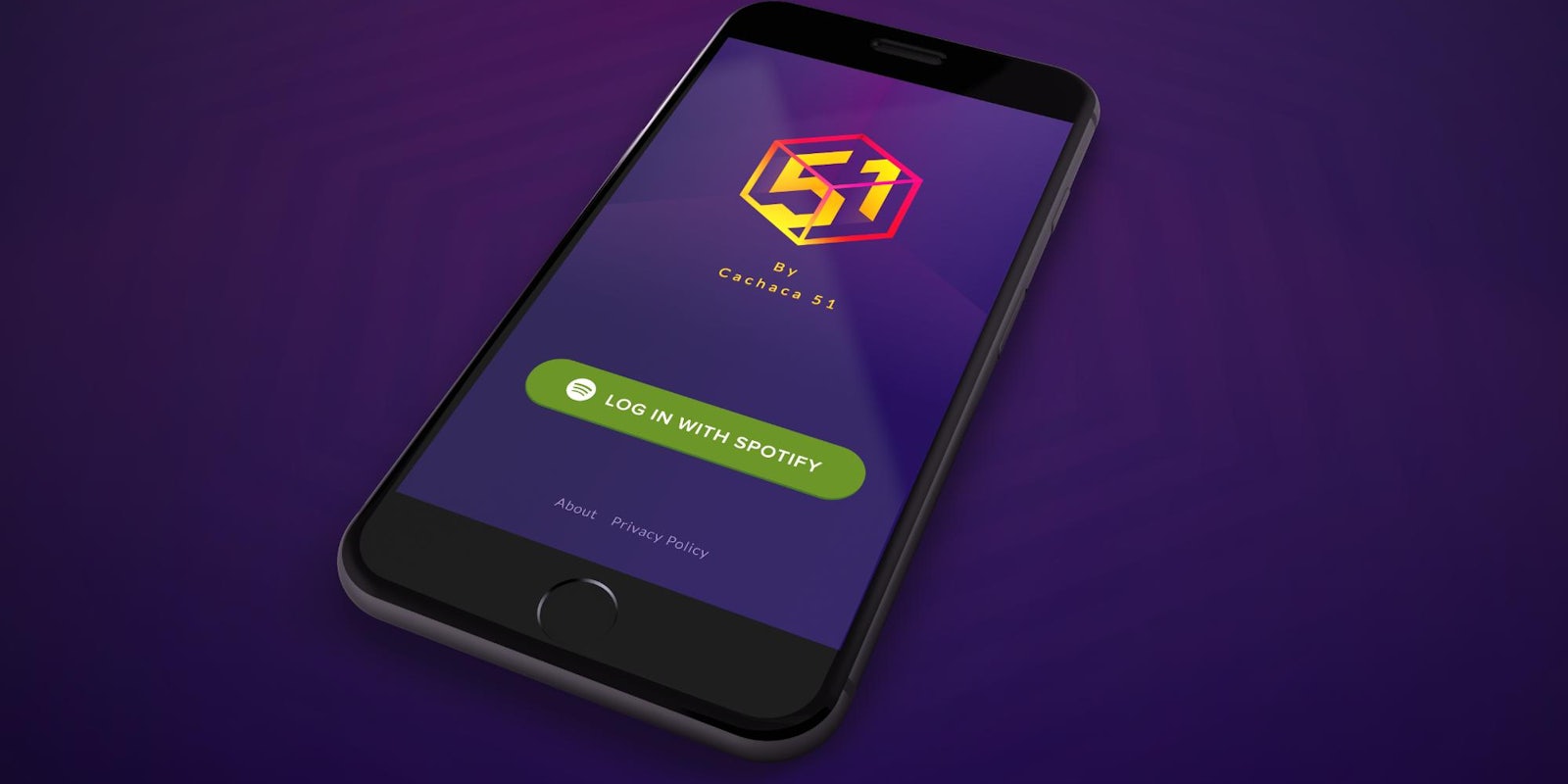Making the right playlist for a party isn’t all that different from making a mixed drink. Do it right and it’ll get people talking, moving, and wanting more. Of course, the more people involved, the harder it becomes to please everyone. DJ-51 claims to know how to make the perfect mix, and it has the pedigree to prove it.
Created in partnership with Brazilian distilled spirit Cachaça 51, DJ-51 launched in a way only a liquor-infused music app could: with a party at SXSW 2015. The event in Austin, Texas, featured free-flowing drinks and a neverending playlist mixed not by the typical house DJ with oversized headphones but by the party’s attendees.
What DJ-51 does is essentially guarantee that everyone in the room will be feeling the music. Party goers connect their Spotify accounts with the app, pooling all of their favorite songs and artists into a collective punch bowl. DJ-51 sifts through this information, matching preferences and finding mutual shared tastes, and puts together a unified playlist that is sure to please.
For the app creator Daniel Perez Pallares, seeing the soundtrack to his SXSW event generated by peoples’ smartphones was the culmination of a concept that had been in his head for years.
“The idea was born four years ago when a friend asked me for an idea to launch his bar. I proposed the creation of a space where people get connected through their music libraries and a common playlist would be created, in lieu of a DJ, so each person would be influencing what’s being listened to at the venue,” Pallares told the Daily Dot.
“At that time there wasn’t an existing platform that would help us support the data-heavy mining and using Bluetooth and aggregated iTunes information would drain the battery of people’s phones too quickly.” Once Pallares caught wind of Cachaca 51’s international launching in 2014, he saw a vessel to carry his idea into reality. With the help of programmer Jorge Proaño, Pallares was finally able to bring DJ-51 to the party.
What was once technically impossible has not only become doable but is more powerful than one could have imagined just years prior. DJ-51 uses a variety of music data analysis solutions to dig into the tastes of a room and pull out the best songs. Pallares said the app sorts out playlists by leveraging the Music Genome Project (developed by Pandora), the Echo Nest (acquired by Spotify), Spotify’s own application program interface (API) and some proprietary algorithms.
“The app servers do all the heavy lifting over the analysis of the taste and the process is actually very simple: It will favor songs and artists that are shared by more than one user, and aggregate similar artists based on the common ones identified,” Pallares explained.
DJ-51 is even able to adjust to a particular mood. The app gives options like “chill” or “popular” to which the algorithms can fine tune its sampling to.
Because DJ-51’s playlist is an amalgam of everyone in the room, there might be concern about inviting that one friend with bad taste who will spike the otherwise perfectly blended mixture with their terrible music. Not a problem, says Pallares.
“Because the algorithms favor intersections and similarity over uniqueness it would be necessary to have more than one friend with terrible musical taste which while possible, usually is not likely given they’re your friends.” he explains. There will be no outbreaks of bad beats with DJ-51 at the wheel.
If you’re worried about your own embarrassing playlists that you keep hidden from public view and use only to accompany you during long baths, fear not. The app gives you the option of selecting what gets shared. You don’t have to surrender your private stash of bubblegum pop jams with your indie cred-laden friends.
Perhaps most interestingly, DJ-51 is location-specific. While that means you won’t be able to mix it up with your friends remotely, it does mean that the app is constantly taking the room’s temperature and making sure the music is ideal for everyone.
“The radius [for DJ-51] is about 0.1 mile,” Pallares said. “As people come and go from the playlist the system will rebuild the playlist to accommodate for the resulting shift in musical taste.”
Pallares sees music to be, like alcohol, a social lubricant of sorts. Because the music being played will always hit upon a common interest of the room, it serves as a talking point. It’s essentially a hyper-local social network.
“We designed the network to be very specific about the physical location of the participants. It might sound odd, but we’re more interested in creating a space that prompts in-person human interaction, where the music creates conversations,” Pallares explained. “We believe in taking the ‘sharing’ concept back from the constant broadcasting and place it where it matters the most, this place at this very moment.”
Like your local party-planning and event services, DJ-51 is available to play at your next gathering. Luckily there are no turntables, strobe lights, or mess of wires required. It’s available for free on Android and iOS devices.
Photo via DJ-51


